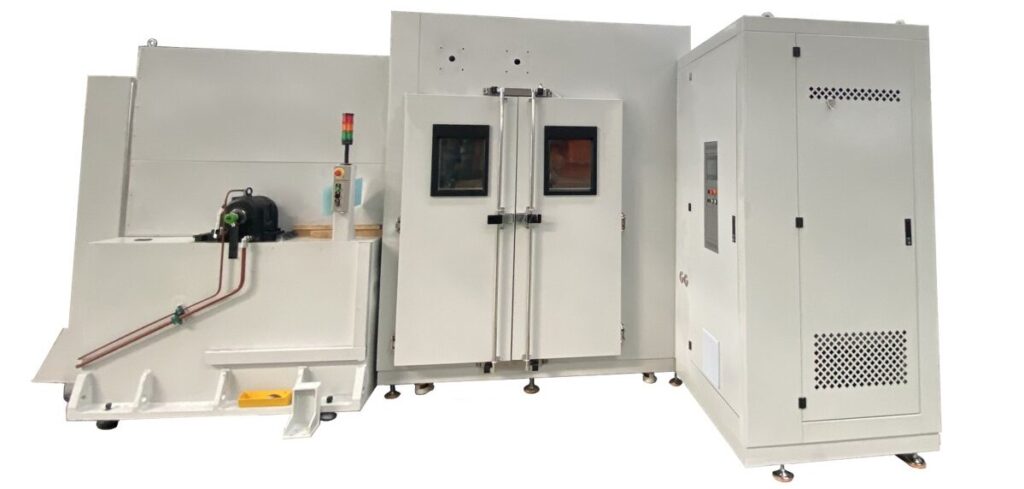Smithers has unveiled a new high- and low-temperature rolling resistance testing machine at its tire and wheel testing laboratory in Suzhou, China. The new machine will begin running client data in August of this year.
A tire’s rolling resistance is an important contributor to fuel consumption of ICE vehicles and is directly related to a vehicle’s carbon dioxide emissions. The tire industry has been studying the effects of rolling resistance and tire tread compound formulation on fuel efficiency since the early 1990s. Given the recent increase in fuel prices, fuel consumption is naturally a great concern.
Current tire rolling resistance standards from ISO, ECE, SAE and other regulatory bodies are designed to assess the rolling resistance of tires at an ambient temperature of 24°C or 25°C. However, the viscoelasticity of rubber, the primary component material of virtually any tire, varies significantly in different temperatures. In order to gain a comprehensive understanding of the tire’s impact on a vehicle’s fuel emissions or cruising range, it is crucial to test the tire’s rolling resistance at different temperatures.
Rolling resistance is also a critical factor affecting the cruise range of EVs, which are powered by large, heavy batteries, which puts excess load on tires and impacts rolling resistance and the vehicle’s average distance per charge (DPC). The DPC for EVs is usually much lower in winter conditions, which suggests an urgent need for low-temperature rolling resistance performance data, so the tire industry can explore methods for correcting the discrepancy.
The new rolling resistance machine at the Smithers lab in Suzhou is equipped to conduct rolling resistance testing at a wide range of ambient temperatures, from -40°C (-40°F) to 40°C (104°F). The machine’s text fixtures can accommodate PCR, LT, and some light-duty TBR tires.
“Smithers is dedicated to fulfilling our long-standing promise of providing our clients with key testing capabilities to meet their changing R&D needs,” said Henry He, general manager, Tire and Wheel Testing Center Asia Pacific, Smithers Materials Science and Engineering Division. “With this new investment, our goal is to help our clients verify product performance and optimize solutions to gain an edge over their competition.”
“At Smithers, our top priority is meeting our clients’ needs by delivering accurate data, on time, with excellent service,” added Derek Read, vice president, Asia Region, Global Development, Smithers Materials Science and Engineering Division. “Our strategy is focused on investing in test capabilities that align with the ever-changing landscape of tire technology and meet our clients’ R&D needs. Investing in high- and low-temperature rolling resistance testing is a critical step in this strategy for us and for our clients.”
Smithers first established tire and wheel testing operations in Suzhou in 2011, in order to serve its global client base and a growing market in the Asia-Pacific region. Tire testing capabilities include endurance and high-speed tire testing with slip and camber angle, plunger/bead un-seat measurement, oven aged durability testing, dynamic Ozone resistance durability testing, dynamic low-temp durability testing, rolling resistance testing, air permeation testing, government compliance, footprint, tire electrical resistance measurement and competitive benchmarking. Wheel testing capabilities include radial, rotary, impact and corrosion. The tire and wheel test laboratory in Suzhou is co-located with a Smithers product testing laboratory that opened in 2019.


